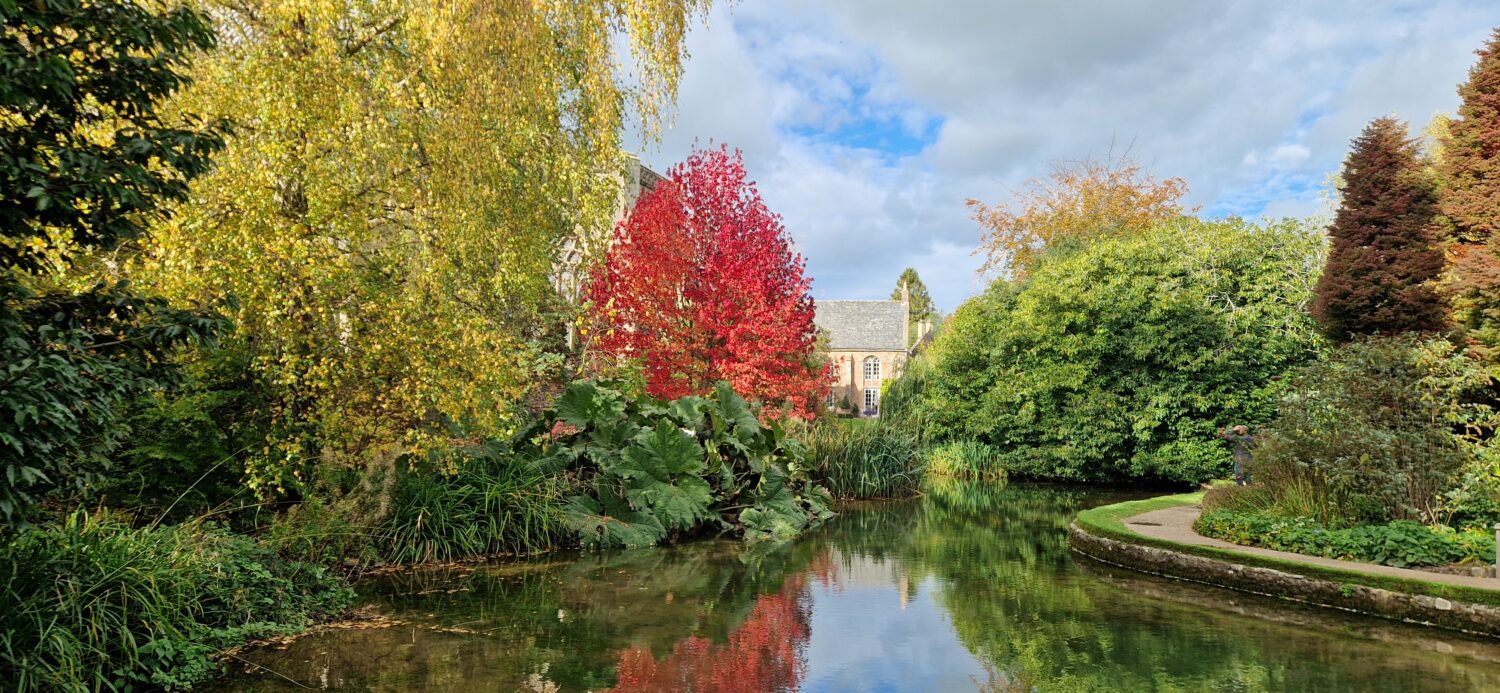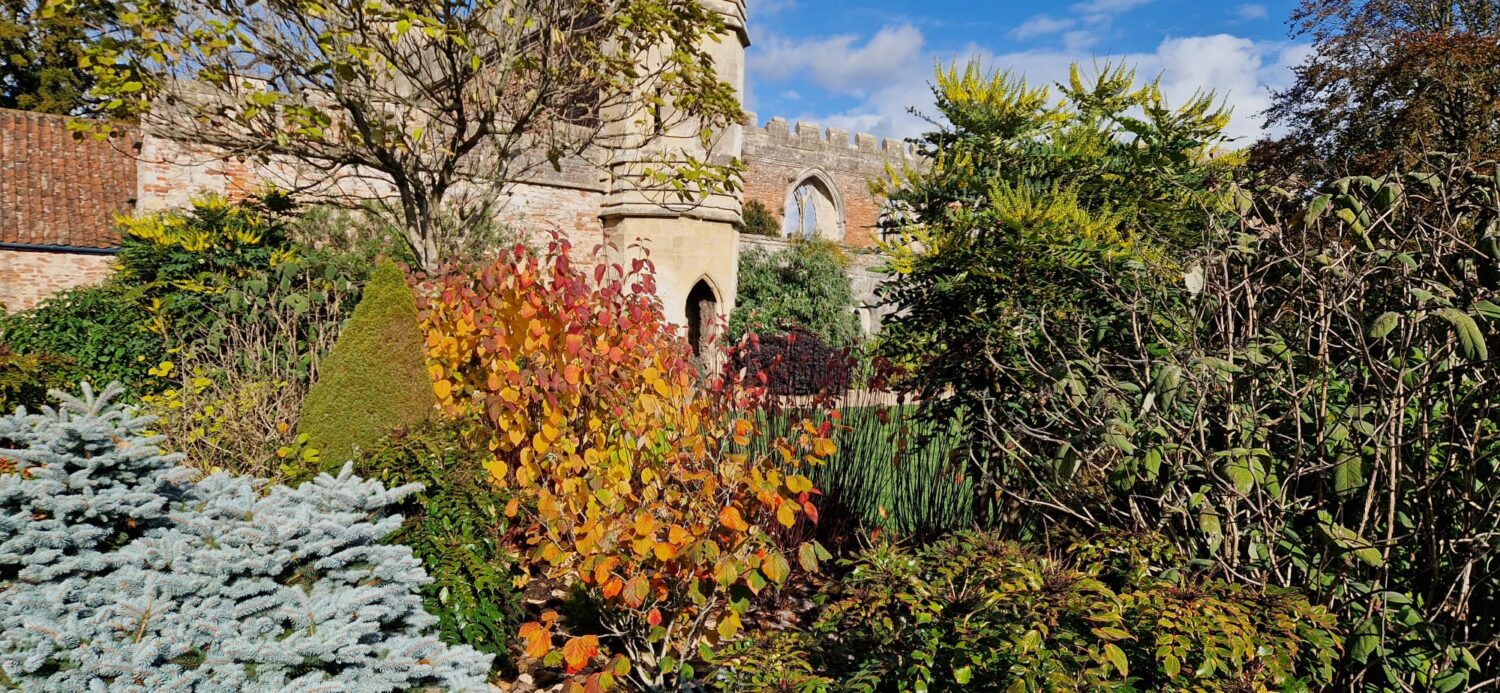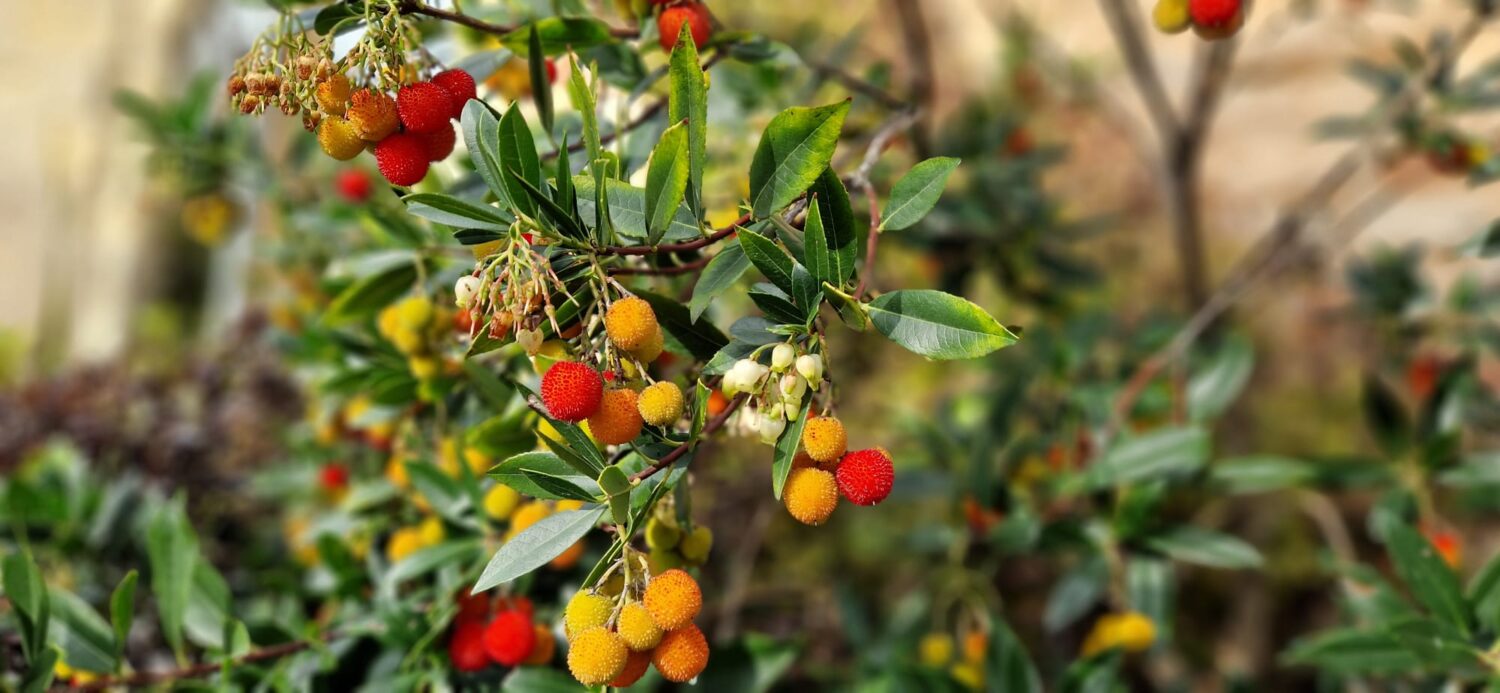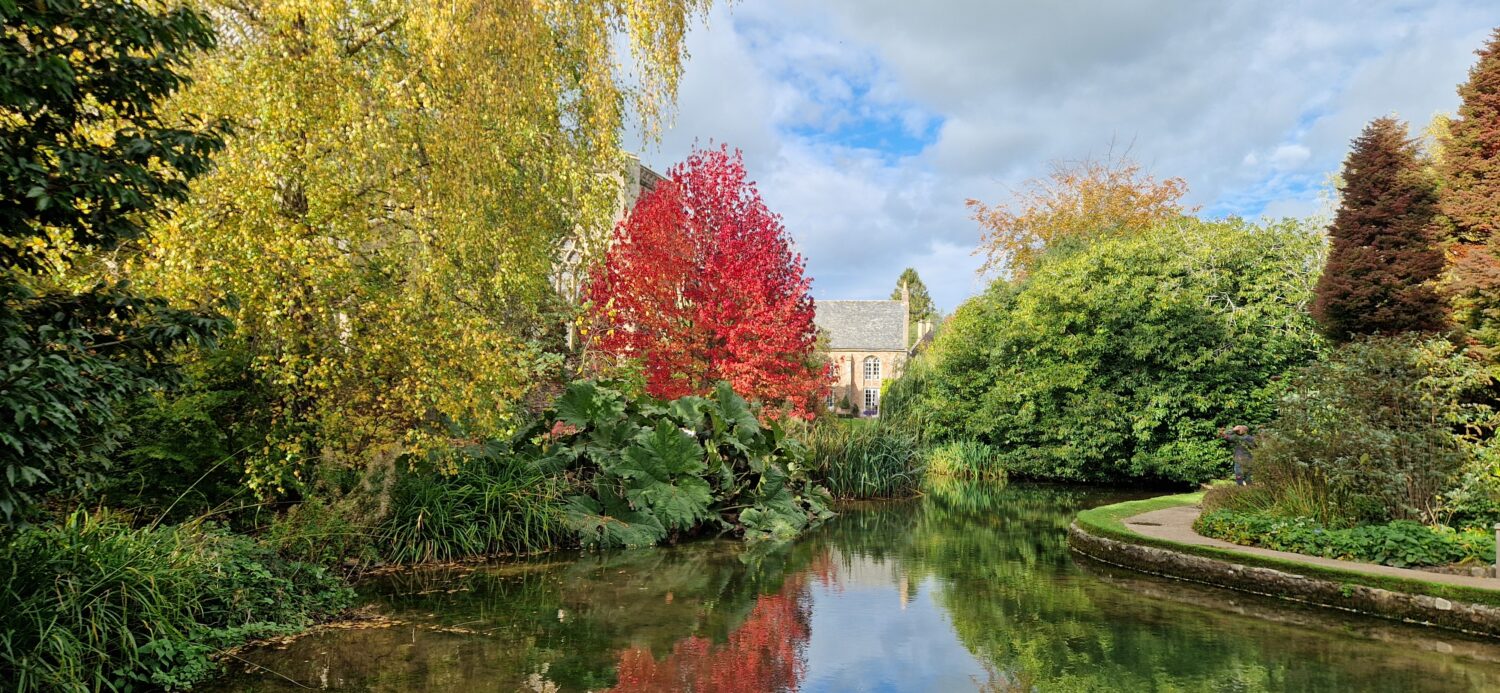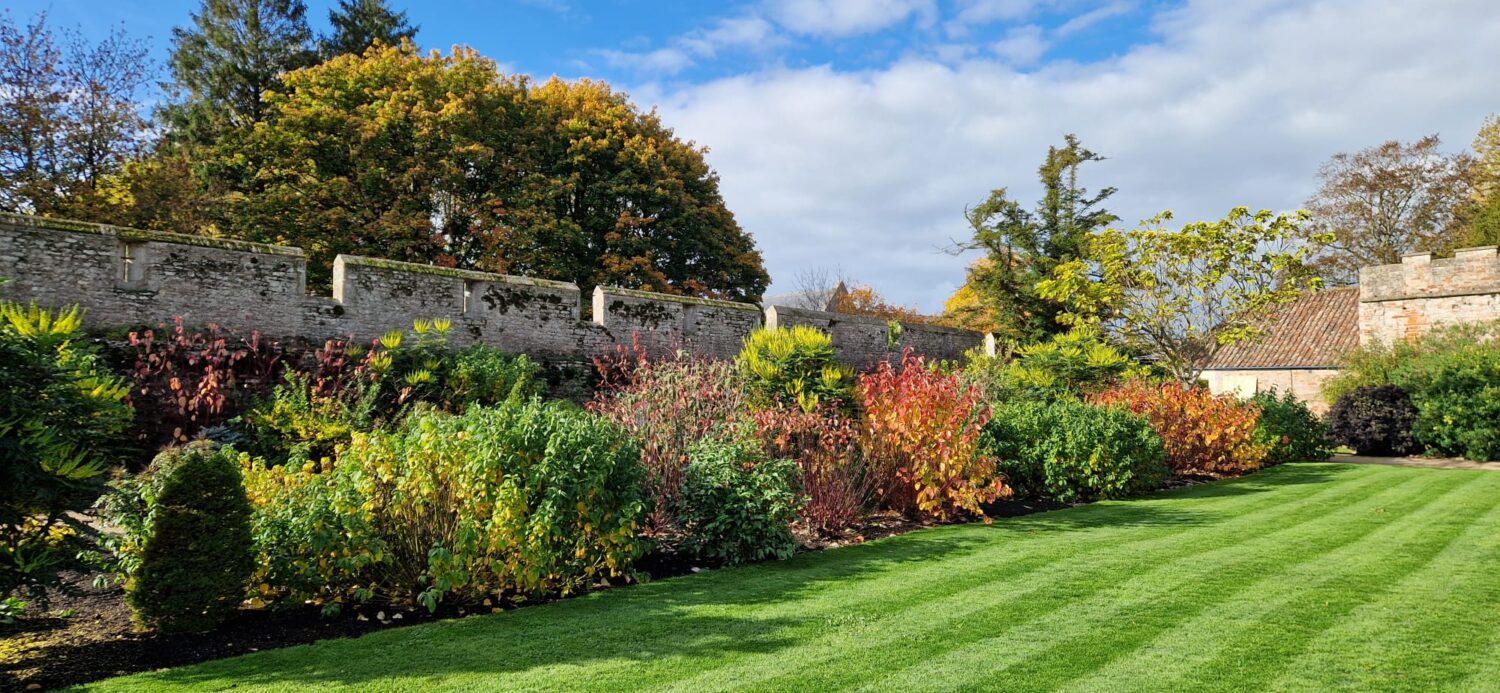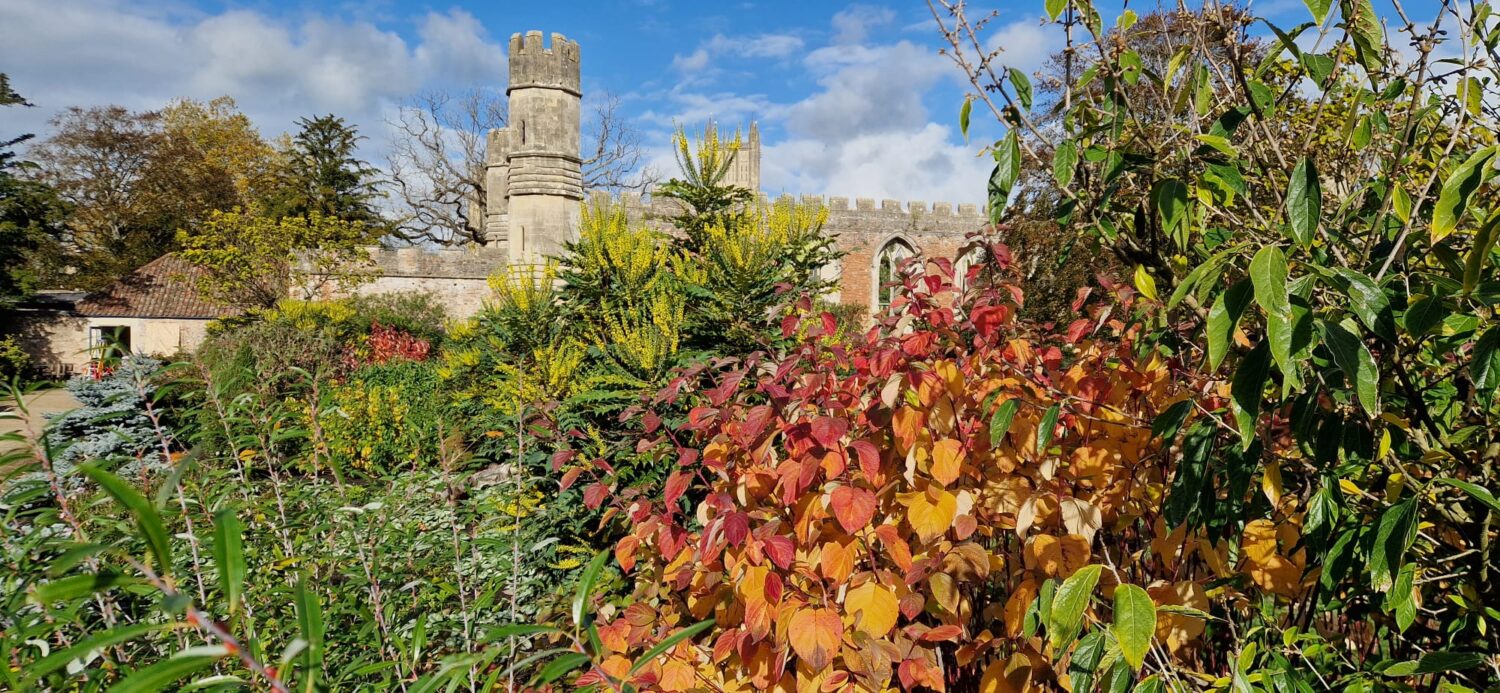November tends to surprise and excite with the amount of interest our gardens can offer. It probably has the most diverse interest of any month, particularly as it has become a very mild month in recent years, with more sunshine hours but also occasional rain.
There is colour from the natural dieback of herbaceous plants, such as golden yellow Hostas and grasses like Stipa. Hydrangeas display deep red, plum, purple, pink, and green mopheads, while the oak-leaved Hydrangea boasts rich red leaves. The winter border is as exciting as it is in late winter, with dogwoods putting on an incredible show of red, orange, yellow, and gold. Mahonias are covered in yellow flowers and abuzz with bees. The intensely red and compact Acer palmatum ‘Garnet’ is one of the best for autumn colour.
Our strawberry trees are full of bright red fruit, which look particularly exotic in November. The contrast between herbaceous structure, conifers, and shrubs reaches its peak, and in autumn sunshine, it makes these borders look spectacular. In addition to all this interest, there are still many roses and rose hips, dahlias flower until mid-month, and Salvias like ‘Amistad’ continue into December.
Many of our magnificent trees are worth watching, in particular the 200-year-old Ginkgo tree, which turns liquid gold. Its leaves are among the best for autumn display; however, they fall rather ungracefully to the ground like large, wet golden snowflakes, often all on a single day. In addition to the summer and autumn interest, many bulbs are appearing now, particularly snowdrops and daffodils, some of which will flower by December. But the king of autumn has to be our Liquidambar styraciflua (Sweetgum) by the Well Pools, which looks stunning from September to November. It is probably the best tree for planting, being highly tolerant of climate change, and is available in a wide range of large and smaller cultivars.
James Cross
Head Gardener, The Bishop’s Palace and Gardens

